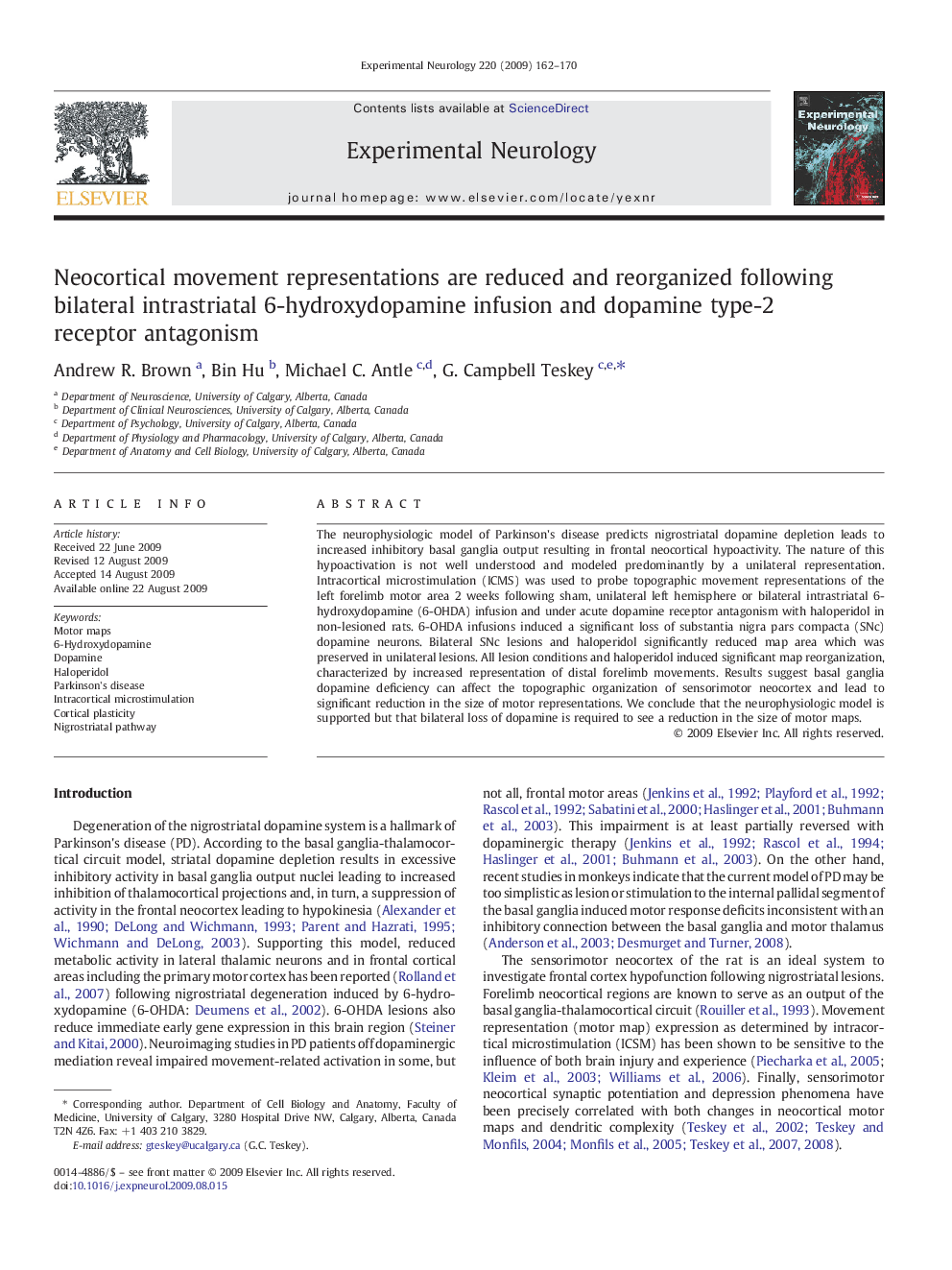| Article ID | Journal | Published Year | Pages | File Type |
|---|---|---|---|---|
| 3056202 | Experimental Neurology | 2009 | 9 Pages |
The neurophysiologic model of Parkinson's disease predicts nigrostriatal dopamine depletion leads to increased inhibitory basal ganglia output resulting in frontal neocortical hypoactivity. The nature of this hypoactivation is not well understood and modeled predominantly by a unilateral representation. Intracortical microstimulation (ICMS) was used to probe topographic movement representations of the left forelimb motor area 2 weeks following sham, unilateral left hemisphere or bilateral intrastriatal 6-hydroxydopamine (6-OHDA) infusion and under acute dopamine receptor antagonism with haloperidol in non-lesioned rats. 6-OHDA infusions induced a significant loss of substantia nigra pars compacta (SNc) dopamine neurons. Bilateral SNc lesions and haloperidol significantly reduced map area which was preserved in unilateral lesions. All lesion conditions and haloperidol induced significant map reorganization, characterized by increased representation of distal forelimb movements. Results suggest basal ganglia dopamine deficiency can affect the topographic organization of sensorimotor neocortex and lead to significant reduction in the size of motor representations. We conclude that the neurophysiologic model is supported but that bilateral loss of dopamine is required to see a reduction in the size of motor maps.
